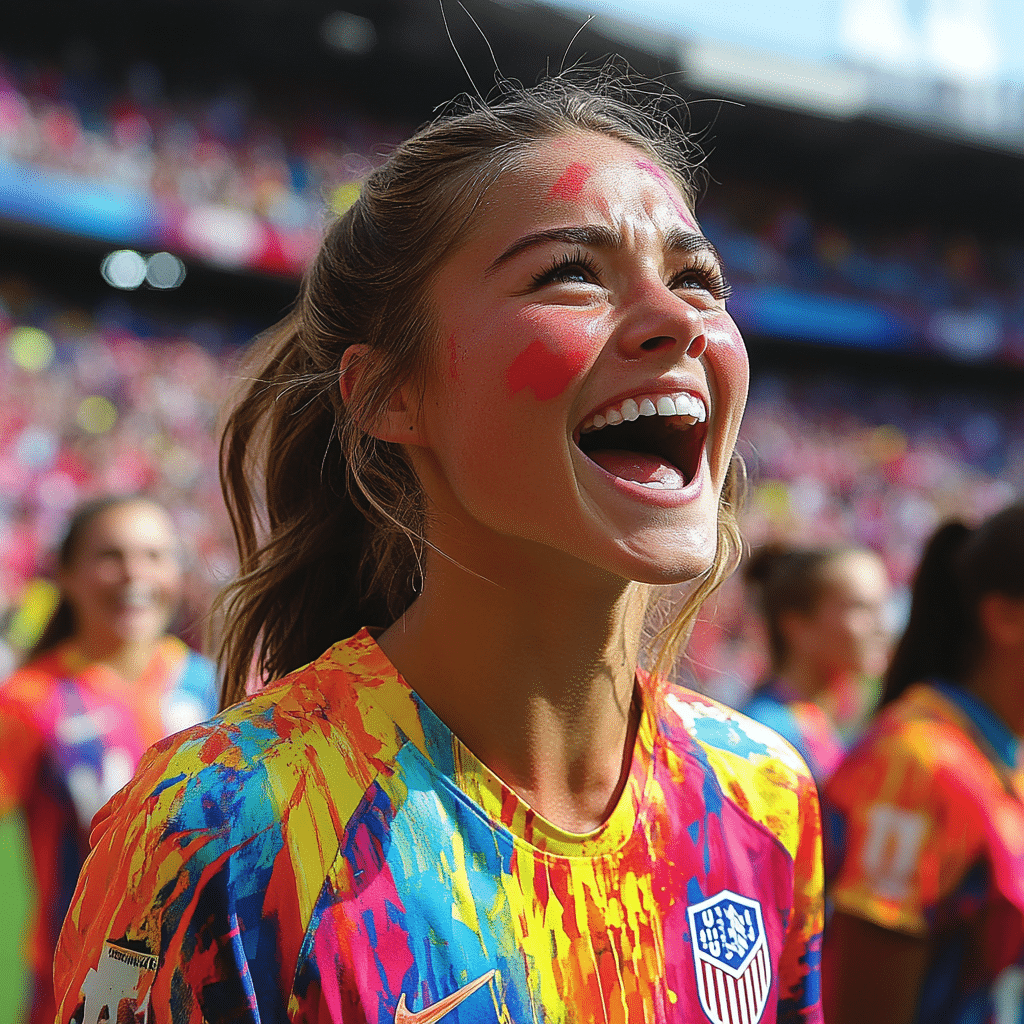The U.S. women’s national soccer team, a legendary powerhouse in the women’s World Cup arena, has always seemed invincible. With four championship titles in five finals, the team set the gold standard for excellence. Yet the recent outcome of the 2023 Women’s World Cup has raised eyebrows and sparked conversations about whether it’s high time to rethink our approach as we look towards future competitions. As fans turn their gaze towards the U.S. women’s World Cup schedule in the coming years, we’re left wondering if the force that once dominated the pitch needs a shake-up to regain that edge.
Top 5 Key Considerations for the US Women’s World Cup Strategy
1. Competitive Analysis: Studying Global Rivals
In an ever-globalizing sports world, the dynamics of women’s soccer have drastically changed. Countries like Sweden and England have emerged from the shadows to make a statement on the international level. The U.S. women must scrutinize competitors’ tactical strategies and player development to keep their competitive fire burning. It’s time to look at what these countries have done differently — be it refined training regimens or aggressive recruitment of young talent.
Identifying the strengths and weaknesses of our rivals is crucial. For example, Sweden has invested significant resources into youth programs that have yielded a robust pipeline of skillful players. The US women’s team must sharpen its focus on these evolving strategies if they wish to reclaim their crown at the next women’s World Cup.
2. Understanding the Women’s World Cup Final Landscape
The landscape of the women’s World Cup finals is seeing a notable shift. The 2023 tournament showcased Spain’s rise to the top with a performance that left many analysts in awe. As more nations ramp up their investment in women’s programs, the traditional dominance of U.S. players is being challenged like never before. Familiar tactics won’t cut it anymore; innovative approaches need to be developed that can withstand the pressure of top-notch competition.
The growing balance in the competitive field underscores the importance of adaptation. The U.S. women’s World Cup camp needs to embrace creativity in gameplay, and this starts with a new way of thinking about training and match strategies. A fresh perspective is imperative as they prepare for what’s ahead in subsequent tournaments.
3. Investment in Youth Development Programs
Let’s face it; success doesn’t happen in a vacuum. The next generation of stars needs nurturing, and investment in youth development programs is essential. As former players like Megan Rapinoe call for more grassroots support, we can’t ignore the importance of building a strong foundation. A revamped women’s World Cup schedule must prioritize consistent training camps and competitive opportunities for young aspiring athletes.
Supporting minor leagues and community programs is vital. Scout for raw talent early and mold them into the stars of tomorrow. The U.S. women’s national team can’t afford to sit on its laurels. Instead, they must actively foster and promote the upcoming generation of players who will one day step into the shoes of legends like Brandi Chastain and Abby Wambach.
4. Emphasis on Tactical Flexibility
Historically, the American women have favored rigid formations, like the classic 4-3-3. Times are changing, and if there’s one lesson learned from their recent struggles, it’s the importance of flexibility. Opponents like France have shown that a strong counter-attacking style can lead to success. Considering alternate formation tactics could provide that much-needed edge in critical matches, leaving opponents guessing and players prepared.
Tactical diversity should not just be a buzzword but a fundamental practice. Each player must be trained across multiple formations, ensuring they can pivot effortlessly when faced with varying challenges. This adaptation is necessary as we prepare for increasingly competitive environments in future women’s World Cups.
5. Mental and Emotional Health Considerations
In sports, winning is not just about physical ability; it’s also a mental game. Players like Alex Morgan highlight the immense pressure to perform. The rising expectations take a toll, and it’s time for the U.S. women’s team to prioritize mental wellness alongside physical training. Incorporating sports psychology sessions and mental health resources into practice could mitigate performance anxiety.
Creating an environment where players feel supported and mentally prepared can lead to improved outcomes. This focus on mental resilience is not just vital for individual players, but crucial in high-stakes moments, including pivotal championship matches. Keeping players’ minds healthy might be the difference between victory and defeat in future women’s World Cup finals.

Evolving Role of Media and Fan Engagement in Women’s World Cup
As women’s soccer gains traction, so do the opportunities to engage with fans. Social media platforms and streaming services have revolutionized the way supporters interact with the sport. We have a chance now to deepen fan engagement, specifically during critical moments like the women’s World Cup final.
Augmented reality interactions or virtual meet-and-greets could embrace fans and build an even more passionate following. Creating a strong fan culture, much like in the vibrant, passionate worlds of traditional sports, could lead to increased support and visibility for women’s soccer. Fans should feel part of the journey, cheering alongside the players as they fight for glory.
The Need for Continued Advocacy for Equal Opportunities
The fight for equal pay and investment in women’s sports continues to be a central focus for the U.S. women’s national team. In the wake of high-profile lawsuits and negotiations, momentum is gaining ground. It’s imperative to keep that momentum going and generate widespread support for equal funding in essential areas like training facilities and travel budgets.
With advocacy from players and fans alike, meaningful change can happen. There should be no barriers in training methods or opportunities based solely on gender. Support for equal opportunities is essential to striving for success on the international stage, creating a level playing field in the quest for women’s soccer supremacy.

Balancing the Legacy with Innovation
The U.S. women’s national soccer team boasts a proud legacy of achievement. But truthfully, sticking solely to tradition won’t preserve that legacy. As the sport rapidly evolves, so must our approach to both training and competition. Welcoming new methodologies and styles of play while retaining the historical core values will create a robust path forward.
Inspirational figures from our past—like the talented Donnie Osmond of Broadway fame—remind us that while it’s tempting to lounge in the comfort of tradition, innovation breathes new life into any successful enterprise. The U.S. women’s World Cup narrative needs refreshing, balancing a rich history with a commitment to advancing the sport.
In Closing
As we gear up for future tournaments, we must commit to an honest reevaluation of the strategies that have guided the U.S. women’s national soccer team for years. The road ahead calls for a bold approach: embracing innovative play, investing time and resources into youth development, prioritizing mental health, effectively engaging fans, and continuing the fight for equality.
The women’s soccer world is dynamic; embracing these changes could be the key to restoring the U.S. to its rightful place at the pinnacle of the women’s World Cup. The stage is set for a thrilling new era, full of opportunity, growth, and especially, the thrill of victory.
Exploring Fun Trivia about the US Women’s World Cup
Did You Know?
While we gear up for the next US Women’s World Cup, it’s fascinating to remember the substantial impact U.S. athletes have made globally. Did you know that the U.S. Women’s National Team has won the tournament four times? That’s a feat only paralleled by the most elite teams— a bit like the buzz surrounding this year’s Oscar predictions, much like the drama between Paul Mescal and Phoebe Bridgers. Their relationship definitely got folks talking, just like the excitement for the upcoming soccer competition! And speaking of excitement, the US team not only dominates on the field, but they also bring home the sparkle, having secured four FIFA Women’s World Cups, emphasizing their standing in sports history.
The Cultural Connection
The cultural influence of the US Women’s World Cup can’t be overstated. Each tournament has launched discussions beyond just athletics, much like the much-anticipated “Game of Thrones” prequel that has captured viewers’ imaginations. The narratives woven into each game reflect struggles and triumphs that resonate with fans everywhere. It’s like enjoying a well-crafted whiskey like the Buchanans; every sip has its own story, contributing to a bigger picture of what it means to support these incredible athletes. Not to mention, the camaraderie and spirit surrounding the matches often invoke feelings reminiscent of our love for cute Animals—just pure joy and connection!
Keeping Spirits High
As soccer fans, we often find the perfect way to celebrate amazing performances, perhaps over a refreshing mimosa, akin to our favorite brunch treat, as we discuss who might become the next star of the US Women’s World Cup. Let’s not forget to appreciate the dedication of the players, who, when they’re not scoring goals, are often seen engaging in community events that build goodwill—similar to how the Osprey aircraft Crashes remind us of the brave men and women serving our country. So why not raise a glass, have some fun, and maybe even dive into classic movies like Lock Stock And Barrel when toggling between matches? After all, the spirit of competition extends well beyond the pitch!

Why did the women’s US soccer team perform poorly in the most recent World Cup?
The U.S. women’s soccer team’s poor performance in the latest World Cup can be attributed to injuries, questionable tactics, and increased global investment in women’s soccer, rather than the presence or absence of the NWSL.
Which country has won the most women’s world cups?
The United States has won the most Women’s World Cup titles, with a remarkable four victories in five finals, while Germany follows with two titles.
Who is number 17 on the Uswnt?
Number 17 on the USWNT is Sam Coffey, who plays as a midfielder.
Where can I watch the United States women’s national under 17 soccer team vs North Korea women’s national under 17 football team?
To catch the U.S. women’s national under-17 soccer team against North Korea, you can watch it on FOX Sports 2, and it’s streamable through Fubo.
Is the US women’s soccer team the best in the world?
Yes, the U.S. women’s soccer team is often regarded as the best in the world, given their track record and achievements in major tournaments.
How many times has the US women’s soccer team won the FIFA Women’s World Cup?
The U.S. women’s soccer team has clinched the FIFA Women’s World Cup title four times.
Why does Uruguay have four stars?
Uruguay has four stars on their jerseys because they’ve won the FIFA World Cup twice and also won two Olympic tournament titles, which FIFA recognizes as world championships for their early success.
Which country has the most dominant women’s team in the world championships?
The United States has one of the most dominant women’s teams in world championships, considering their numerous titles and consistent performances.
Has Brazil ever won the women’s FIFA World Cup?
Brazil has not won the women’s FIFA World Cup, despite being a strong competitor and often seen as one of the favorites.
Who is Megan Rapinoe married to?
Megan Rapinoe is married to Sue Bird, an Olympic gold medalist and WNBA star.
How tall is the average women’s soccer player?
The average height of women’s soccer players typically ranges from about 5’4″ to 5’7″, though it can vary depending on the individual.
Who is the 17 year old on the US soccer team?
The current 17-year-old on the U.S. national soccer team is not specified, but recently, young talents often include players from the U.S. youth setups.
What is FIFA in football?
FIFA, or the Fédération Internationale de Football Association, is the international governing body for the sport of football (soccer) and oversees major tournaments around the globe.
Where can I watch the US Women’s Soccer League?
You can watch the US Women’s Soccer League on platforms like ESPN+ or through various sports networks that have broadcasting rights.
Where can I watch Mexico U-17 vs Venezuela U-17?
To watch Mexico U-17 vs. Venezuela U-17, you’ll want to check sports networks that cover youth tournaments, as these games are often available on channels like FOX Sports or streaming services that carry soccer matches.







![nba]](https://www.theconservativetoday.com/wp-content/uploads/2025/02/nba-768x768.png)





























